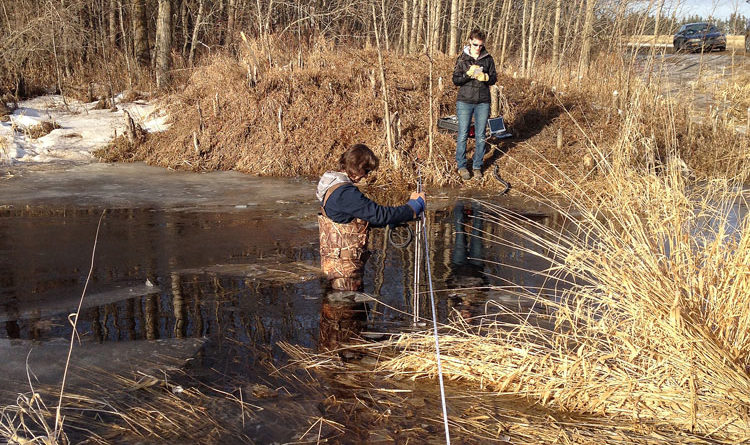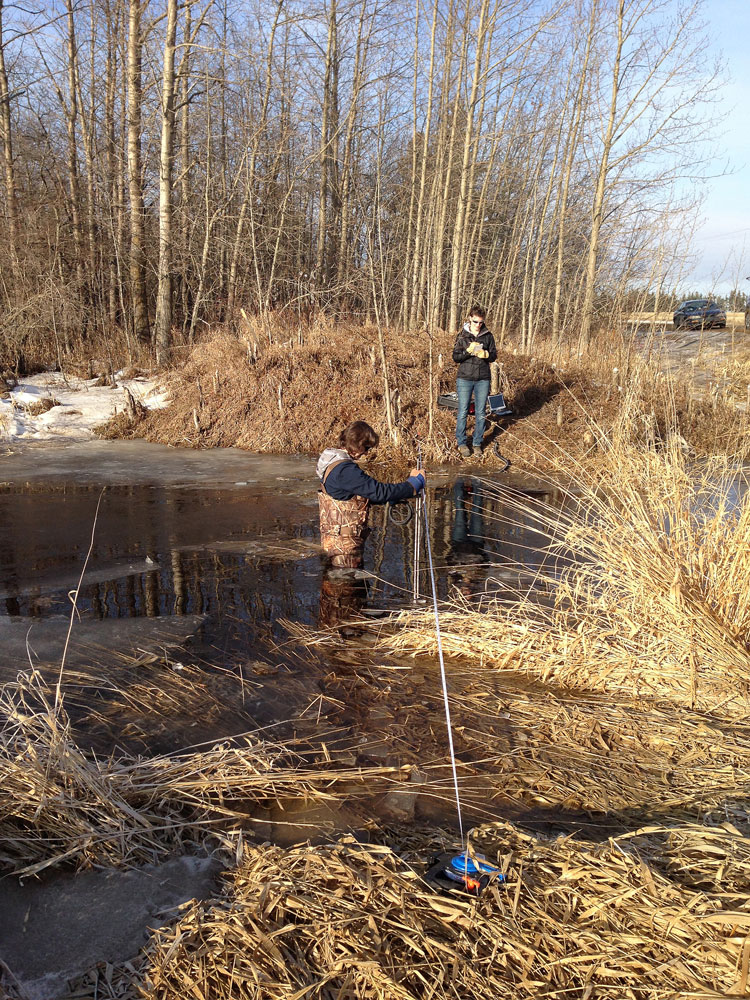Wetlands impact water quality and support agriculture
By null
By Ducks Unlimited Canada


Photo Courtesy of DUC
“Like kids and puddles – I have an unbreakable attraction to aquatic ecosystems,” said Badiou, a research scientist with DUC’s Institute for Wetland and Waterfowl Research.
But it’s his recent work in Alberta’s parkland region that is providing some important food for thought for farmers, especially those who are considering draining their wetlands.
“Canadian Prairie wetlands are the single most understudied aquatic ecosystem in the world,” said Badiou. “Our previous work in Saskatchewan and Manitoba has shown that wetlands are great at dealing with contaminants. The Alberta-based project supported these findings and helped to quantify just how important these ecosystems are for regulating water quality and quantity.”
During the last three years, Badiou and his team focused on the Camrose Creek Watershed and the Battle River Watershed, an area of land covering 30,000 square kilometres in east central Alberta.
While the first two years of the Camrose Creek project had some challenges with minimal snowpack resulting in little water running off the land, the third year, with more significant snowpack, gave the team their best opportunity to monitor water headed downstream.
The results were telling. Key findings showed that wetland loss in the Camrose Creek watershed has greatly expanded the contributing area of the watershed. This means that more water from a larger surrounding area is coming into the watershed. While wetland loss in the Camrose Creek watershed is moderate as compared to other prairie watersheds, it is approaching a critical threshold. Continued losses will impact the watershed’s ability to handle extreme precipitation and will contribute to nutrient loading in downstream rivers and lakes.
The study showed that existing wetlands in the Camrose Creek watershed provide $1.8 million in social benefits, including $1.2 million in flood benefits (Pattison-Williams, J.K. 2018. A Business Case for Wetland Conservation in the Camrose Creek Watershed), and that prairie wetlands like those in Camrose Creek watershed are important regulators of water quality and water quantity. The study also stated that when wetlands are lost, the watershed’s ability to hold heavy amounts of precipitation is reduced. This contributes to flooding and increases the volume of harmful nutrients, including phosphorus, that flow downstream via runoff.
What’s in the water
There are considerable water quality issues across Alberta, Saskatchewan and Manitoba that adversely affect farmers, residents and water users downstream. Wetlands provide a natural solution.
“Pollutants contained in run-off are broken down, consumed and stored within wetland vegetation and sediment, sending cleaner water downstream. Wetlands in cropland generally have high levels of nitrogen, phosphorus and pesticides, relative to wetlands in grasslands and pastures,” said Badiou. “This demonstrates the importance of keeping wetlands on the landscape, in terms of mitigating pollution from cropland.”
As contaminant levels increase, communities can experience other water quality concerns, too.
“We know that wetland drainage increases the amount of nutrients sent downstream. That has the potential to cause other water quality issues. Think of the algae blooms we see in Pigeon Lake, Lake Winnipeg and Lake Diefenbaker,” said Badiou. “It’s happening all across the Prairies.”
Linking the science
By researching watersheds, Badiou and his DUC team can better demonstrate what happens when people make changes to the Prairie’s natural systems, such as draining wetlands. It’s important information that all farmers in Alberta need to think about.
